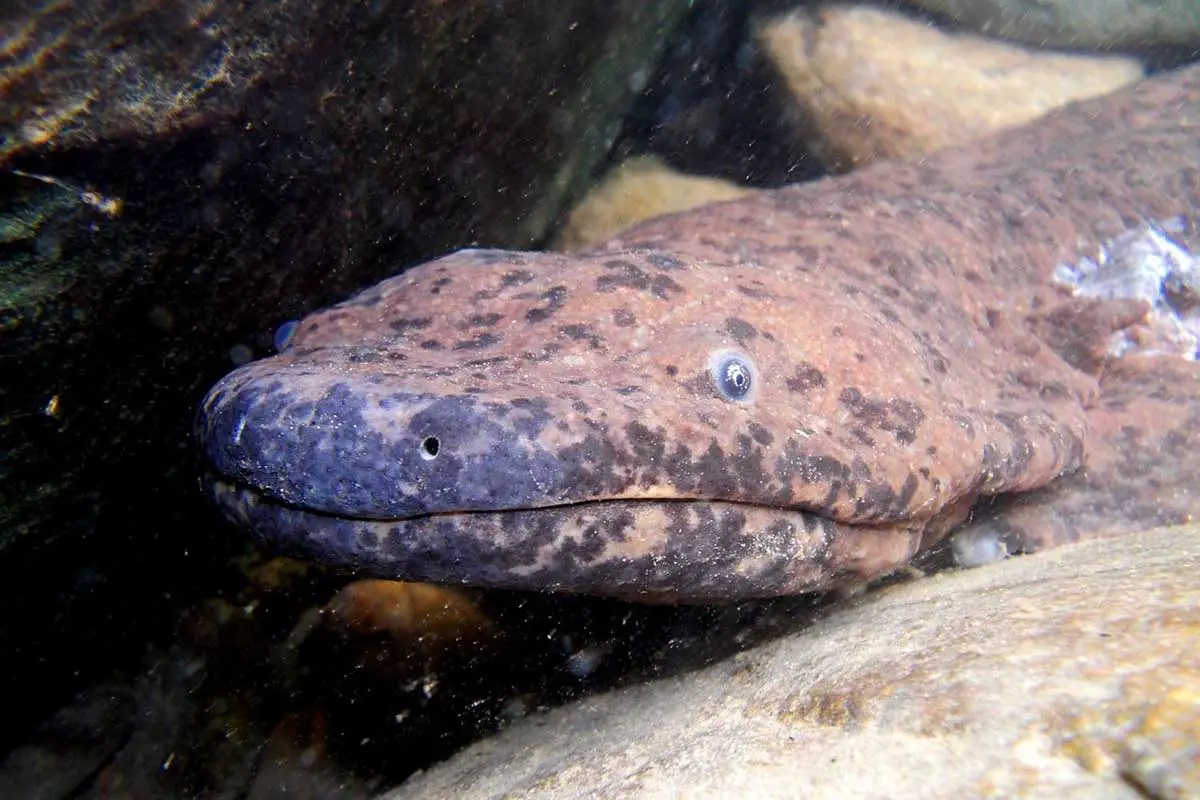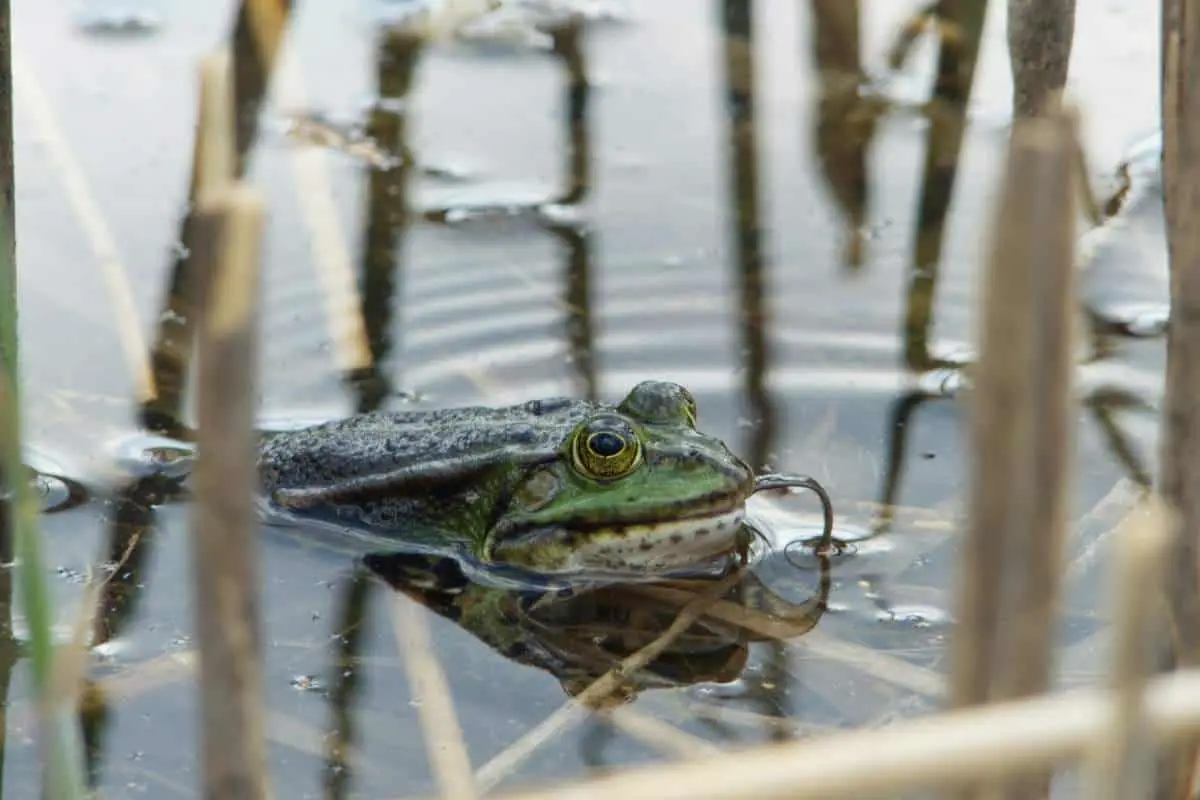Chinese giant salamander on the rock | image by Shu Chen Andrew A via Wikimedia Commons | CC BY-SA 4.0
Chinese giant salamanders are the largest amphibians in the world. These mysterious giants are fascinating creatures to learn about. Here we have put together 15 facts about Chinese giant salamanders. Follow along as we learn more about these fascinating amphibians.
15 Facts about Chinese Giant Salamanders
These amazing amphibians are fully aquatic, spending their lives in streams and rivers near the Yangtze basin in central China. They like rocky areas with flowing water. These huge salamanders are listed as critically endangered. Populations have declined due to habitat loss from pollution and human activity, including hunting and consumption. Here some more interesting facts about this unique species.
1. They Are An Ancient Species
You wouldn’t picture them as a dinosaur, but Chinese giant salamanders have lived on earth for 170 million years. They are an ancient species and basically just living fossils on earth.
In fact, Chinese giant salamanders are one of the oldest species on earth. The species belongs to a salamander group from the Jurassic Period that branched off the evolutionary timeline.
2. They Can Weigh Over 100 lbs.
The largest Chinese giant salamander on record weighed 110 pounds. It is not unusual for these creatures to reach 100 pounds.
They can reach lengths of over 5 feet. The animals that reach this size are often well over 50 years old and live in optimal conditions.
3. Longest Lifespan Of Any Amphibian
The record for the longest lifespan belongs to the largest Chinese giant salamander found, with experts estimating the Chinese giant salamander’s lifespan to be an impressive 200 years.
Chinese giant salamanders have the longest lifespan of any amphibian. It’s not unusual for them to live well over 50 years in captivity. Several have reached a hundred years old.
4. Their Tail Is 60% Of Their Body
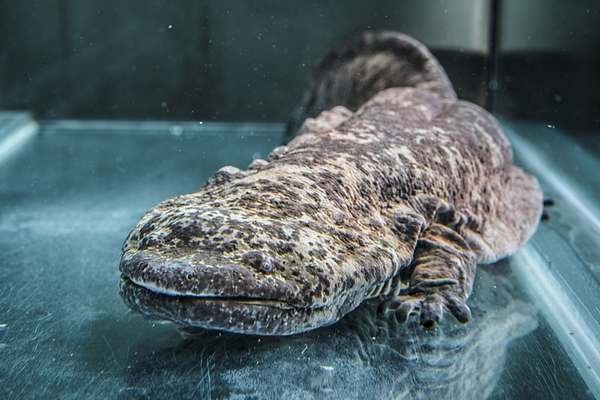
Chinese giant salamanders grow up to almost 6 feet, and 60% of their length is their gigantic tail. The tail is thick and flat. It has a dorsal fin running down the spine.
Salamanders use their tail for swimming. Their muscular tail is used to swim upstream and through moving water. It’s almost like a huge flat paddle that propels their giant body.
5. They Grow According To Water Temperature
Water conditions play a big part in the Chinese giant salamander development. This also includes the development of eggs and larvae.
The temperature of the water determines its growth rate. Warmer water helps them grow and develop faster than cold water. Flowing water is also good for their development.
6. They Are One Of 3 Species Of Giant Salamander
The Chinese giant salamander is one of 3 species of giant salamander in the world. They are closely related to the Japanese giant salamander and hellbender from North America.
The main difference between the Chinese and Japanese species are the tubercle patterns on their head. Hellbenders are different from both because it keeps their gills.
7. They Absorb Oxygen Through Their Skin
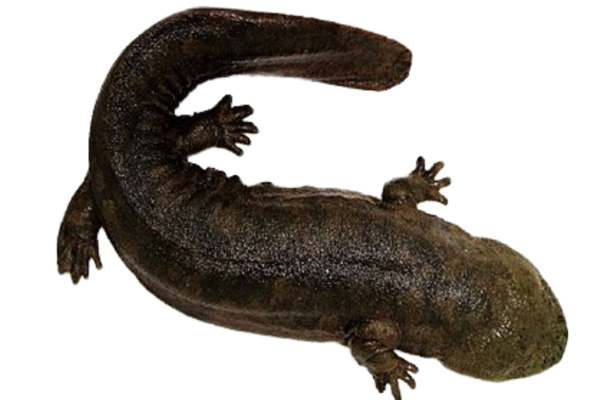
The Chinese giant salamander absorbs oxygen through their skin, but they also have lungs. Their skin is porous and saggy. It pulls oxygen directly into the bloodstream, bypassing the lungs.
Even though they spend their entire lives underwater, they do not have gills. They do, however, have a set of nostrils that connect to their lungs. So they have options when it comes to breathing.
8. They Are Important To Chinese Culture
The Chinese giant salamander is an important part of ancient Chinese culture. It’s used in dishes and for medicinal purposes. This has led to poaching and a lower population.
The giant salamanders have almost been hunted to extinction to supply luxury food markets. People have been trying to raise them in captivity to help the struggling populations.
9. They Are Territorial
Chinese giant salamanders live in rivers and lakes. They are strictly territorial and will defend their territory from other salamanders. This is true for both males and females.
One adult salamander needs at least 30 square meters of water volume to thrive. They only share territory during mating season.
10. Females Lay 400 to 500 Eggs At A Time
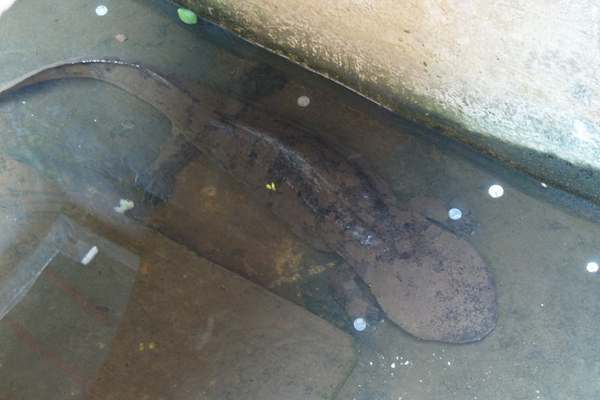
Female Chinese giant salamanders lay a maximum of 500 eggs. She lays them in an underwater cave that has a male inside.
The male fertilizes the eggs externally. Then he guards the clutch of eggs until they develop and hatch. It can take a couple of months for the eggs to develop into larvae.
11. They Sound Like A Baby Crying
The Chinese giant salamander makes an unusual sound. They emit a crying sound, like a baby. In Mandarin Chinese, it’s called Wáwáyú, which literally translates to “infant fish.”
Imagine hearing a child crying near a river. People have been deceived by the crying, thinking it was a child or baby stranded in the water. Really, it’s just a salamander calling.
12. Males Perform Mating Rituals
Chinese giant salamanders perform complex mating rituals. The male shows off for the female through his acrobatics and movements.
Males clean out their den. He will fiercely defend his den and his female. Sometimes males will fight to the death over a crevice or a female.
13. They Are Monogamous During Mating Season
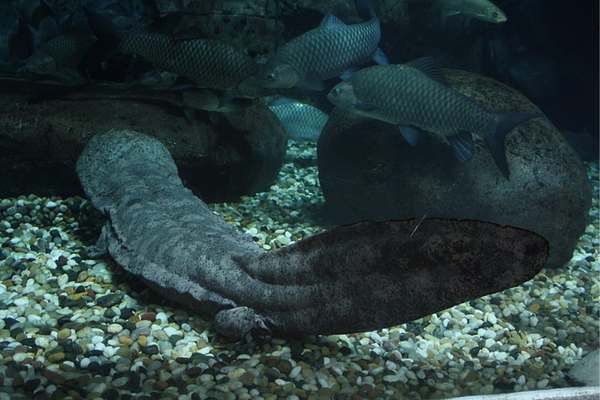
The mating season for Chinese giant salamanders is August through September. Males and females are monogamous during this time.
They usually mate twice a year and only mate with each other in the male’s den. The male stays behind after the eggs are laid.
14. Males Protect The Eggs
After mating has completed and the female leaves, the male Chinese giant salamander stays with the eggs to guard and protect them.
It takes 50 to 60 days for the eggs to hatch. The male salamander remains with the eggs the entire time. He will only leave the den to feed and clean their bodies.
15. They Have Extremely Poor Eyesight
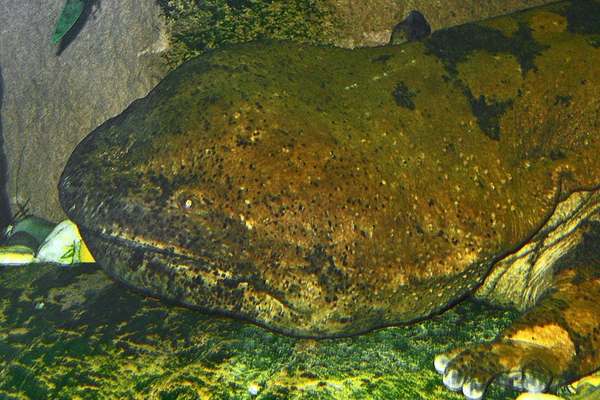
You could probably guess by the looks of their tiny eyes Chinese giant salamanders have terrible eyesight. They are virtually blind.
To hunt and find prey, their body is lined with sensory nodes. These nodes are extremely sensitive to movements in the water, allowing the salamander to detect prey.
